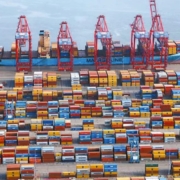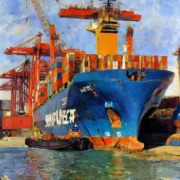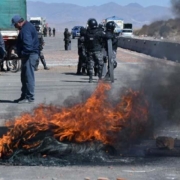Less than 48 hours after the Dong Ming explosion, a ship owned by industry leader MSC exploded in Colombo.
According to the latest report from China’s YiHangYun, less than 48 hours after the Yang Ming’s “Dong Ming” exploded at Ningbo Port, the industry leader Mediterranean Shipping Company (MSC) had another container ship, the MSC CapeTown III, catch fire and explode at JCT Terminal in Colombo, Sri Lanka, in the early morning of August 11.
NEWS FIRST reported that the Sri Lanka Ports Authority (SLPA) stated that swift and coordinated actions successfully averted a potential disaster after a fire broke out on the container ship MVMSC CAPETOWN III, which was berthed at the Jaya Container Terminal (JCT) in Colombo.
At the time, the ship was unloading 995 TEUs and loading 880 TEUs when a fire suddenly broke out in the hatch area near the ship’s accommodation, followed by an explosion.
The explosion occurred below the deck, and the 60 affected containers on deck had already been unloaded, including one containing hazardous cargo.
Following the fire, all shipboard operators and auxiliary crew were immediately evacuated. Firefighters, in cooperation with other port services, quickly took action to extinguish the fire and safely remove the affected cargo.
The cause of the fire has not yet been determined. The Sri Lanka Ports Authority said it is conducting a thorough investigation and will hold the ship’s agent accountable.
Ship data shows that the MSC CapeTown III (IMO: 9311737) was built in 2006, has a capacity of 2,824 TEUs, flies the flag of Portugal, and is owned, managed, and operated by MSC. The ship is currently deployed on the South Asia-East Africa route.
Vessel information provided by YiHangYun shows that the MSC CapeTown III departed Singapore on August 5 and arrived at Colombo Port at 21:37 on August 10.
According to the original schedule, the MSC CapeTown III was to proceed to Mombasa, Kenya, after completing loading and unloading operations at Colombo Port. However, due to the fire and explosion on board, the ship’s subsequent schedule may be delayed.
Senior figures in China’s shipping industry pointed out that the hot weather necessitates stricter management of the transportation of hazardous goods. On July 19, a Panama-flagged container ship caught fire in Indian waters. This series of accidents is expected to lead to stricter management of hazardous goods transportation by ports worldwide, and shipping companies will tighten their transportation conditions.
NEWS FROM: ETTODAY

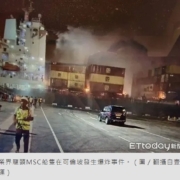
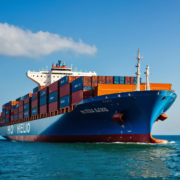 日本食品の国境検査措置 (最新の情報9/26)
日本食品の国境検査措置 (最新の情報9/26)


